The Acer CFexpress card or CFE100, is the next addition to the memory card portfolio from Acer. The CFE100 is a CFexpress memory card (Type-B form factor) that supports 8K DCI video recording and stores continuous shooting for a wide range of compatible cameras.
The Acer CFexpress card or CFE100, is the next addition to the memory card portfolio from Acer. The CFE100 is a CFexpress memory card (Type-B form factor) that supports 8K DCI video recording and stores continuous shooting for a wide range of compatible cameras.
Compared to the other CF100 compact memory card from Acer, the CFE100 is a higher profile memory card designed for capturing high-quality images and delivering RAW 4K or 8K video. The CFE100 can provide up to 1,600MB/s read and 1,200MB/s write for super-fast file transfers to increase workflow and save time for any professional user.
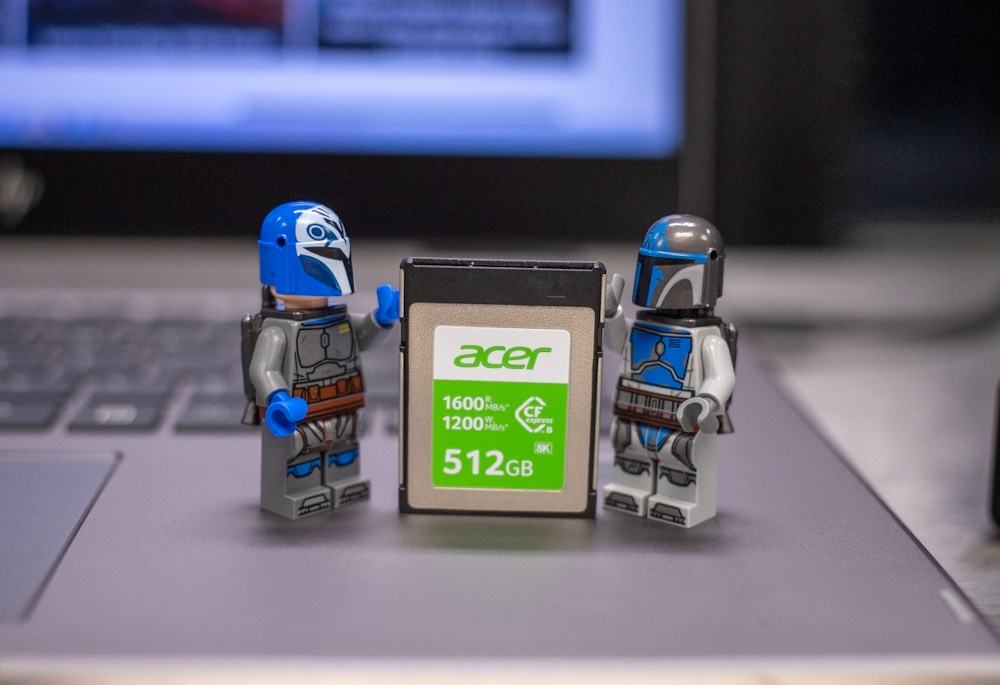
Acer CFE100 Memory Card
The CFE100 is engineered with an industrial NAND flash and a PCIe Gen 3×2 interface, and with it, Acer is able to report the high speeds of up to 1,600MB/s read and 1,200MB/s write. With these numbers, users can expect better performance than some of the SSDs out on the market as well as a drastic increase in performance compared to many of the regular SD cards that are out there for also shooting video and images. The CFE100 was specially designed for serious professionals as it is able to handle that RAW 4K and 8K video quality.
Since the CFE100 is designed for those that intend to shoot continuous high-quality video or images, Acer is releasing the CFE100 in three different capacities, 128GB, 256GB, and 512GB. Each capacity is also rated at that 1,600MB/s sequential read speed, however, only the 512GB model is rated for the 1,200MB/s sequential write, while the other two are listed at 1,000MB/s sequential write speed.
The CFE100 is backed by a 5-year warranty and can be found for roughly $190 for the 128GB model on Newegg, however, in this review, we are taking a look at the 512GB model, which doesn’t have an official price yet.
Acer CFE100 Memory Card Specifications
| Product | Acer CFE100 CFexpress Card |
| Model Name | CFE100-128GB / CFE100-256GB / CFE100-512GB… |
| Capacity | 128 GB / 256 GB / 512 GB |
| Form Factor | CFexpress™ Type B |
| Interface | PCIe Gen3×2 |
| Max. Sequential
Reading Speed |
1600 MB/s / 1600 MB/s / 1600 MB/s |
| Max. Sequential
Writing Speed |
1000 MB/s / 1000 MB/s / 1200 MB/s |
| Compatibility | Backward-compatible with select XQD cameras |
| Storage
Temperature |
-40 ℃ – 85 °C |
| Working
Temperature |
-20 °C – 70 °C |
| Dimensions | 29.60 × 38.50 × 3.80 mm |
| Weight | ≤10 g |
| Limited
Warranty |
5-Year |
Acer CFE100 Memory Card Design and Build
The CFE100 comes in at 1.16 inches in width and 1.5 inches in height, making it in line with CFexpress Type-B card form factors. Still, with its compact size, the CFE100 is still able to pack quite a punch in terms of the performance the card is able to handle. This card is able to deliver better speeds than some SATA SSD drives and is a quarter the size.
The CFE100 does have a PCIe Gen 3×2 interface, which is one of the ways that it is able to reach such high speeds while it is recording video. Acer also says that when the card is connected to a computer via a USB 3.1 Gen 2 standard cable, it won’t be able to reach the reported speeds given initially and will be lower than 10Gbps.

The CFE100 shows off the standard green sticker on the front showing the Acer name, the speeds that the card is able to reach, the capacity, and that it is a CFexpress Type-B memory card. This is all good information to have without the card seeming too cluttered as professionals may have multiple cards so easily reading which card is in your hand will be nice for professionals.
Acer has also talked about how each CFE100 card has gone under rigorous testing before leaving the factory. Each CFE100 card is completely sealed and is magnet proof, X-ray proof, UV-guarded, and anti-static to reduce accidental damage and ensure no file corruption. The CFE100 can also operate in temperatures from -20 ℃ – 70 ℃ to allow for even the extreme conditions for videography.
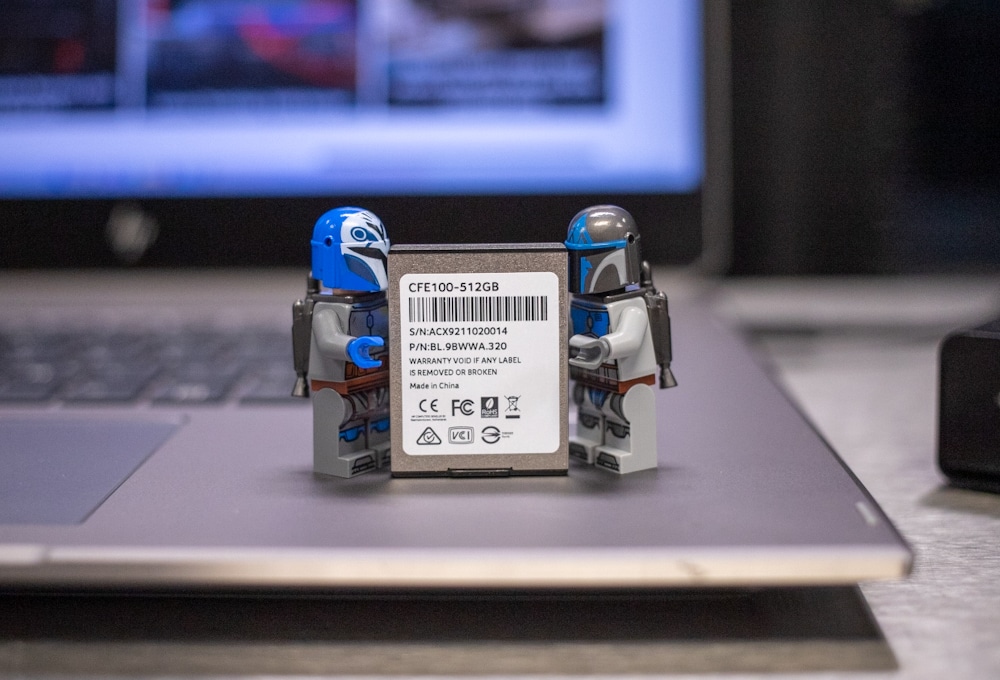
Acer CFE100 Memory Card Performance
To test the CFE100, we leveraged the BlackJet TX-1CXQ Thunderbolt 3 CFexpress Type B card reader. This BlackJet device is a standard CFexpress Type-B/XQD card reader that is also Thunderbolt 3, which is nice as it is designed for professional cinema memory card users.
Since a big part of choosing which CFexpress card is the best choice for you is to compare them against each other, we ended up running the Lexar Professional CFexpress Type B card through the same benchmarking steps to give us and users a good comparison.
The first test was with the Lexar Professional CFexpress Type B in the Blackmagic Design Disk Speed Test in which the card was able to reach 825MB/s read and 487MB/s. The Lexar was able to hit many of the checkmarks in the “Will It Work?” section, showing support for many video files.
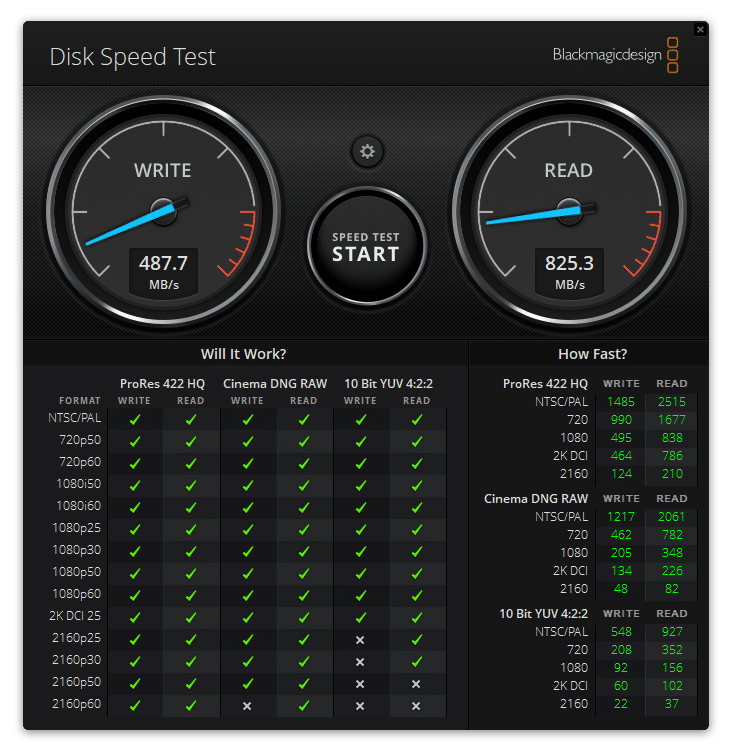
The next Blackmagic Test was for the CFE100 and was able to get us 1,430MB/s read and 294MB/s, along with hitting just as many checks in the “Will It Work?” section. As we can see from the first benchmark, the CFE100 far surpassed the Lexar Professional CFexpress in the read speeds nearly doubling it, however, was proportionally lower in the write speed, with the CFE100 being about half of the Lexar.
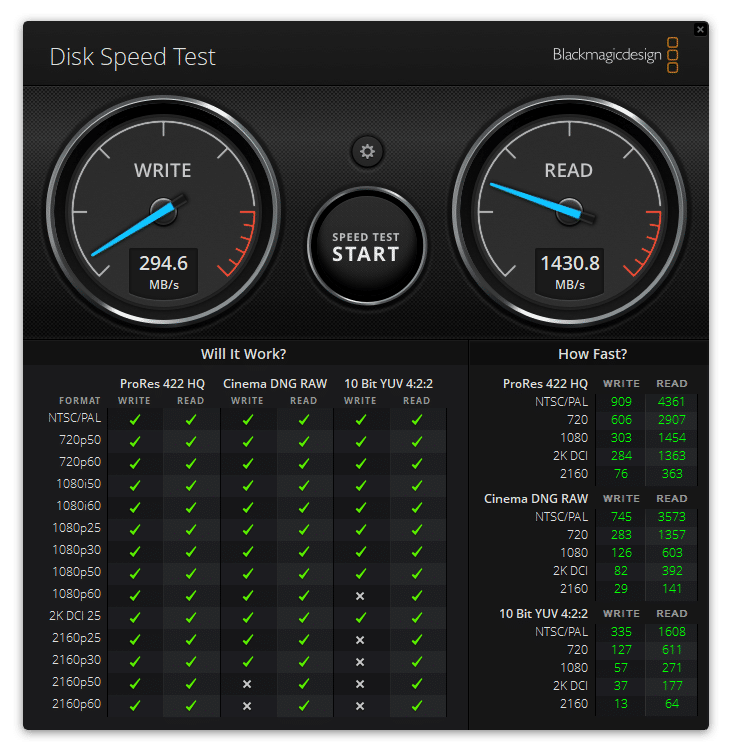
Moving onto the first IOMeter benchmark, we tested the Acer CFE100 and the Lexar in a single thread workload as we normally do. In the 2MB sequential workload, the CFE100 saw 1,165MB/s read and 280MB/s write and the Lexar saw 700MB/s read and 433MB/s write.
In the 2MB random loads, the CFE100 got 754MB/s read and 145MB/s write and the Lexar got 696MB/s read and 428MB/s write. Lastly, in the 4K tests, the Acer CFE100 got 7,170 IOPS read and 294 IOPS write while the Lexar got 8,906 IOPS read and 22,198 IOPS write.
| IOMeter (1-Thread) |
||
| Test | Acer CFexpress | Lexar CFexpress |
| 2MB sequential write | 280.05MB/s | 433.03MB/s |
| 2MB sequential read | 1,165.88MB/s | 700.08MB/s |
| 2MB random write | 145.87MB/s | 428.30MB/s |
| 2MB random read | 754.88MB/s | 696.07MB/s |
| 4K random write | 294.18 IOPS | 22,198 IOPS |
| 4K random read | 7,170 IOPS | 8,906 IOPS |
The last test that we did, the IOMeter benchmark, but with a 4-thread workload to try to put a heavy workload on both cards. In the 2MB sequential workload, the CFE100 saw 1,422MB/s read and 318MB/s write and the Lexar Professional CFexpress saw 944MB/s read and 524MB/s write.
In the 2MB random loads, the CFE100 got 1,064MB/s read and 152MB/s write and the Lexar got 948MB/s read and 510MB/s write. Lastly, in the 4K tests, the Acer CFE100 got 25,613 IOPS read and 1,149 IOPS write and the Lexar got 23,513 IOPS read and 53,347 IOPS write.
| IOMeter (4-Thread) |
||
| Test | Acer CFexpress | Lexar CFexpress |
| 2MB sequential write | 318.23MB/s | 524.63MB/s |
| 2MB sequential read | 1,422.38MB/s | 944.76MB/s |
| 2MB random write | 152.18MB/s | 510.40MB/s |
| 2MB random read | 1,064.86MB/s | 948.23MB/s |
| 4K random write | 1,149 IOPS | 53,347 IOPS |
| 4K random read | 25,613 IOPS | 23,513 IOPS |
Conclusion
The Acer CFE100 is a CFexpress Type-B memory card that features a PCIe Gen 3×2 interface and an industrial NAND flash that can get roughly 1,600MB/s read and 1,200MB/s write. The CFE100 is designed for video professionals who need quick file transfers and need to shoot continuous video with support of 4K or 8K video. Each CFE100 from Acer is able able to withstand harsh environments allowing for video to be taken anywhere and the CFexpress cards come in capacities from 128GB to 512GB.
Looking at the first performance benchmark that we ran, the Blackmagic Design test, the Acer CFE100 was able to get 1430MB/s read and 294MB/s write while the Lexar Professional CFexpress was able to reach 825MB/s read and 487MB/s write. As a direct comparison between the two, there are spots where the Acer CFE100 does better and times when the Lexar Professional CFexpress does better.
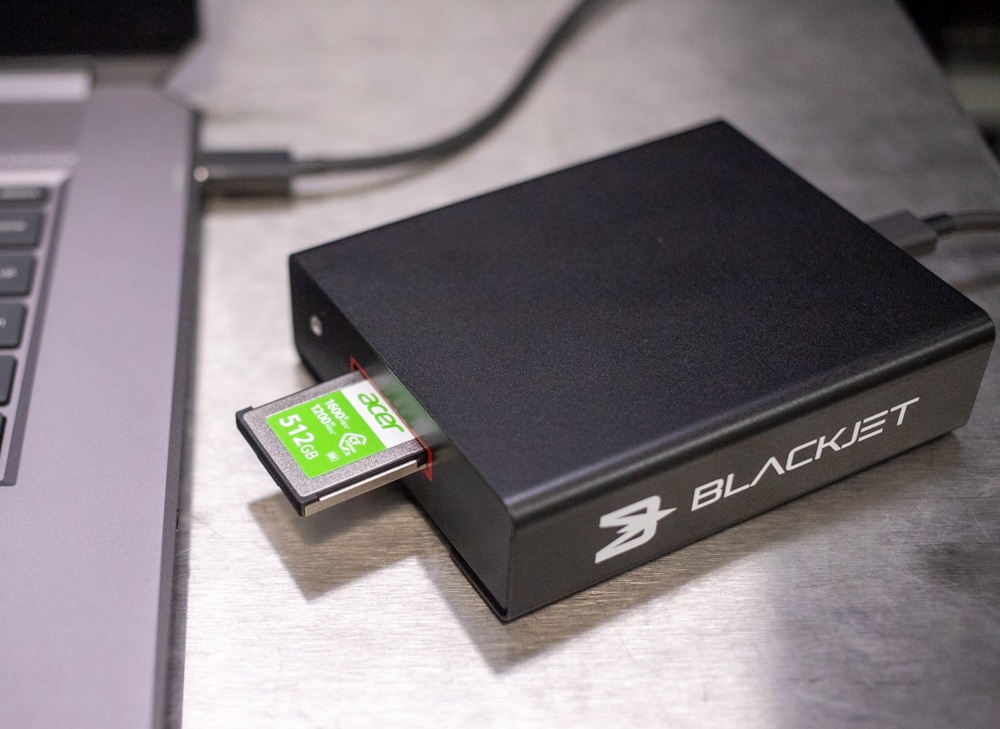
Looking at the next benchmark that we performed, the 1-thread, 2MB sequential test, the Acer CFE100 reached 1,165MB/s read and 280MB/s write while the Lexar Professional CFexpress got 700MB/s read and 433MB/s write. In our random tests, the CFE100 got 754MB/s read and 145MB/s write and the Lexar reached 696MB/s read and 428MB/s write.
In the 4-thread test, when looking at the 2MB sequential test, the Acer CFE100 reached 1,422MB/s read and 318MB/s write while the Lexar got 944MB/s read and 524MB/s write. In our random tests, the CFE100 got 1,064MB/s read and 152MB/s write and the Lexar reached 948MB/s read and 510MB/s write. The 4-thread test continued the trend of the CFE100 outperforming the Lexar in the read speed but not the write speed. Both cards fell short of their quoted write speeds.
Overall, the Acer CFE100 is another CFexpress Type-B memory card option for those shopping in the more exclusive professional media card space. The CFE100 is a step up from the Acer CF100 and is designed for those users needing a boost in video performance when shooting 4K or 8K videos.
Engage with StorageReview
Newsletter | YouTube | Podcast iTunes/Spotify | Instagram | Twitter | Facebook | RSS Feed
